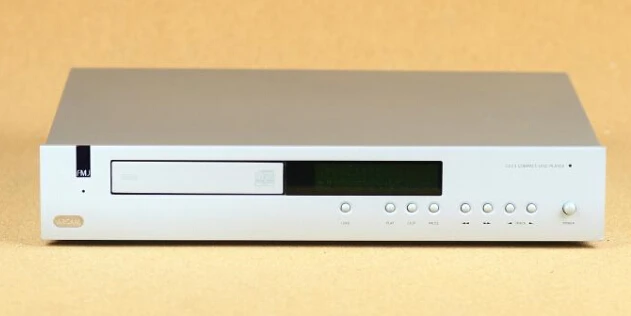Sony’s first CD recorder was released in late 1998 in the company’s native market of Japan. It was a surprise at the time, because Sony had previously stated that MiniDisc was a competitor to Philips’ (then) new CD recordable format, and that as a result, no CD-R machines could be expected! It was odd because MD sales were booming in the Land of the Rising Sun at the time, and DAT was still a popular high-end consumer format.
The first machine was a ‘ES’ series device in the center of the spectrum, selling for roughly Y60,000 (£350), indicating that Sony thought MD was a good cheap format and DAT was a good semi-pro standard, but there was a gap in the middle that needed to be filled. After five years, the RCD-W3 has finally arrived in the United Kingdom. It was first spotted at the 2001 Tokyo Audio Expo and was priced to sell for just about £200, putting it bang in the middle of the pack.
Sony had stated that it was still “dedicated” to the MiniDisc format at the time, but there was a progressive transition downmarket going on. You could have had an MDS-JA50ES for a few penny under a thousand pounds just a few years before, but by 2003, you’d be hard pressed to buy a Sony MD hi-fi separate on the High Street for less than £150. It was looking more and more like a niche format, with its days of brisk sales behind it.
The machine you see in front of you stepped into the void. Economies of scale enabled CD-R technology to become more affordable thanks to the massive PC computer industry. Meridian’s first hi-fi CD-R recorder, debuted in the late 1980s, cost £3,000 and used blanks that cost £35 apiece; the Sony you’re looking at cost around £150 and utilized the same media, which cost just 35p each. That was a step forward!
So, what about the RCD-W3? It’s a twin-tray design with a single playback deck and another recorder, to be precise. The two are digitally linked, allowing 4x copying and finalization, allowing an average music CD to be transcribed in roughly fifteen minutes — Sony claimed this made it Europe’s quickest gun. By employing two transports for playback, the machine can be used as a CD multiplayer. It plays regular CDs and reads and writes to CD-Rs and CD-RWs; however, only ‘audio’ CD-R/Ws are supported for recording.
To be honest, there isn’t much evidence of audiophile tinkering here. It’s an unquestionably attractive gadget, and at 4.6kg, it’s not as flimsy as some sub-£200 CD gear, but it’s also not very noteworthy. Its most notable features are four 24-bit ‘Type H Pulse’ DACs and a ‘intelligent disc servo system’ for playback optimization — neither of which are particularly noteworthy. Its large fascia (made feasible by its 430x108x451mm proportions) is very precisely laid out, making it a delight to use.
The transport controls for each drive are located down each flank, and their displays are located under each disc drawer. There are a few options, including the aforementioned ‘Synchro Start’ high-speed dubbing, which results in a fully synchronized recording. Of course, a ‘Normal’ 1x option is available for optimal sound quality. There are several CD play modes to choose from, including 32-step programmability and CD Text display. A button on the fascia’s lower right edge toggles between inputs, which include one optical digital and one RCA phono analogue. A front panel level pot, in conjunction with the display-mounted peak level meters, adjusts the latter’s level. The accompanying Sony RM-R50 remote allows for variable line out, and a 6.3mm headphone connection rounds out the kit.
First and foremost, as a playback deck, the RCD-W3 was conventional Sony budget gear from the turn of the century. This is a presentation that is rather smooth, even, and musical, with few obvious indicators of raggedness, roughness, or unpleasantness. It has a quick and tuneful bass, good midband details, and a pleasant treble. However, you can’t pretend this is anything more than a budget player – the midband is narrow and one-dimensional, the bass is loose and light, and the treble is a little too splashy.
At normal speed, the Sony created outstanding direct digital disc copies as a recording deck. There was very little auditory degradation between the original and CD-R, which is to be expected since the digital datastream is only sent a few inches down to the burner drive. In the end, there was a tiny flattening of depth perspective, a mild lightening and loosening of bass, and a softness of treble, but nothing to be concerned about. If only low-cost tape decks had sounded this amazing! Analog recordings didn’t sound nearly as good, sounding thin and sterile. Overall, given its low price, this was a great product that could be picked up for peanuts.







